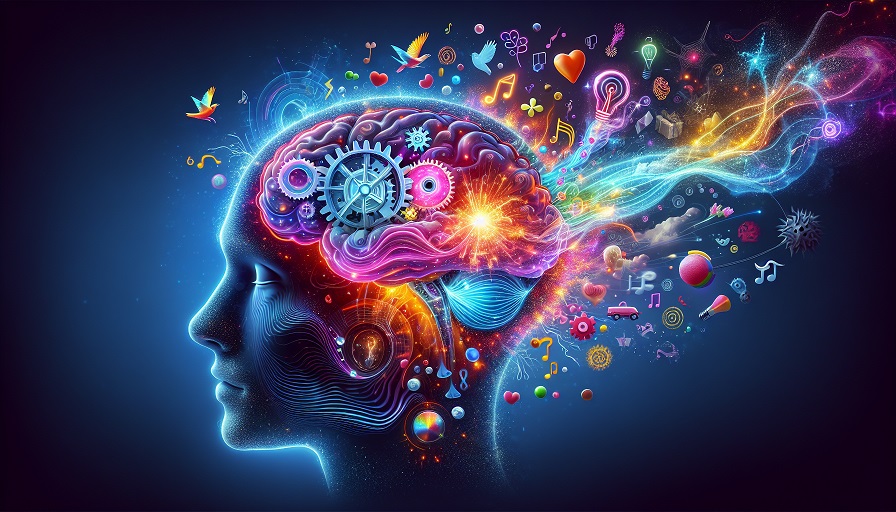
Imagine trying to navigate a high-speed freeway with a horse and buggy. That’s not far off from what your brain is doing every day. Our neural wiring evolved over thousands of years to suit a world of hunting, foraging, and tribal life. But now we’re bombarded by emails, social media, traffic jams, and 24/7 notifications. There’s growing recognition that while our surroundings have changed at lightning speed, our brains are still playing catch-up, and paying a price for it.
Contents
The Legacy Brain in a Modern World
Most of the brain’s basic architecture formed long before smartphones, skyscrapers, or TikTok. We’re operating with neural hardware that was finalized during the Stone Age. Back then, life was physically demanding but cognitively simpler. You had to remember landmarks, avoid predators, find food, and maintain social ties within a tight-knit group.
Evolution’s Slow Pace
Biological evolution is slow. It takes thousands of generations for structural brain changes to occur. Meanwhile, societal and technological evolution has exploded. We now face an avalanche of new stimuli daily, from push notifications to algorithmically curated news cycles. The brain, evolved to process modest input and prioritize immediate threats, is now managing an endless stream of abstract data and constant low-grade stress.
The Mismatch Problem
This misalignment between ancient brain design and modern stimuli is called the “evolutionary mismatch.” It doesn’t mean we’re doomed, but it helps explain why anxiety, burnout, decision fatigue, and attention problems are skyrocketing. We’re asking our Paleolithic brain to function like a cloud server, and it’s simply not optimized for that.
Ancient Priorities, Modern Conflicts
To understand why modern life is mentally exhausting, consider what your brain evolved to prioritize:
- Immediate survival: Is there danger nearby? Is that rustle a snake or the wind?
- Social cohesion: Am I accepted by my group? Am I safe with them?
- Energy conservation: Can I get by with the least effort to preserve calories?
- Repetition and pattern recognition: Have I seen this before? Can I predict it?
Compare that to what modern life demands:
- Deciphering dozens of emails with subtle social cues
- Reacting to world events within minutes
- Working under artificial lighting for 8–10 hours
- Managing multiple identities online and offline
- Resisting food engineered for addiction
The contrast is stark, and stressful.
Information Overload and Attention Fatigue
There’s a limit to how much your brain can absorb and process in a day. The average person now consumes about 74 gigabytes of information daily, more than five times what people handled in 1986. And we wonder why we’re tired.
The Cost of Constant Input
All this data taxes the brain’s executive function system, the part responsible for attention, decision-making, and impulse control. Over time, this leads to cognitive fatigue. You might feel mentally scattered, emotionally reactive, or just plain exhausted, even if you haven’t done anything “hard.”
Decision Fatigue Is Real
From choosing breakfast to replying to Slack messages, we make thousands of tiny decisions every day. Each one chips away at mental energy. By afternoon, you’re more likely to skip your workout, opt for junk food, or fire off that snarky email. The brain craves rest, and modern life rarely grants it.
Stress Signals and the Brain’s Alarm System
Your brain has a built-in alarm system, the amygdala, that evolved to scan for threats. In the past, this meant wild animals or rival tribes. Today, it overreacts to social media likes, missed texts, or a comment taken the wrong way.
Modern Stress Isn’t Less, It’s Different
Today’s stressors aren’t life-threatening, but they’re chronic. Your body stays in a low-grade state of fight-or-flight: elevated cortisol, shallow breathing, tight muscles. This has long-term consequences for memory, mood, and immune function. Ancient humans had downtime. We don’t.
Hyperstimulation and Anxiety
Smartphones, breaking news, and endless scrolling keep the brain in a constant state of partial alertness. This hyperstimulation floods the nervous system, making it harder to focus, relax, or sleep. Our reward systems become dysregulated, craving novelty even as we grow mentally exhausted.
Adapting the Ancient Brain
We can’t change our brain’s evolutionary timeline, but we can learn to work with it, rather than against it. Modern life doesn’t come with a manual, but the following practices help the brain adapt:
Reconnect with Nature
Even brief exposure to natural environments calms the nervous system and restores attention. Walks in the park, hikes, or just sitting under a tree help reset overstimulated minds. It’s no accident that being outside “feels good”, your brain remembers where it came from.
Build Routines and Limits
The brain thrives on predictability. Set schedules, limited decision-making (like a fixed breakfast), and boundaries around work or screens reduce overload. Habits conserve energy. Automation is your brain’s best friend.
Rest Isn’t Lazy, It’s Necessary
Rest is productive. Strategic breaks, naps, or quiet time allow the brain to consolidate learning and restore function. Think of it as maintenance for your neural engine. Without it, even the smartest minds start misfiring.
Consider Cognitive Support
Some people turn to nootropics or brain supplements as part of their modern survival kit. These compounds aren’t miracle workers, but when combined with rest, nutrition, and exercise, they may support clarity, focus, or memory during demanding periods. Used wisely, they can offer a subtle edge in an overwhelming world.
Creating a Brain-Friendly Life
The modern world won’t slow down for us. But we can design lives that respect the brain’s true design. That means making space for slowness, seeking depth over quantity, and treating rest as sacred.
Start small:
- Turn off push notifications for an hour each day
- Eat without screens
- Walk without earbuds once a week
- Set a bedtime and honor it
- Use supplements only when needed, not as a crutch
These simple acts signal to your brain: “You’re safe. You can relax.” Over time, they build resilience in a world that constantly pulls you away from center.
A Modern Brain with Ancient Roots
Your brain is brilliant, but it’s not built for inbox zero or infinite scroll. It still thinks it’s dodging lions and gossiping around the fire. That mismatch creates tension, but also opportunity.
With care, intention, and tools (including subtle aids like nootropics), you can bridge the gap between your inner wiring and the outer world. The challenge isn’t to upgrade your brain, it’s to align your environment with what your brain truly needs. And that just might be the smartest move of all.

